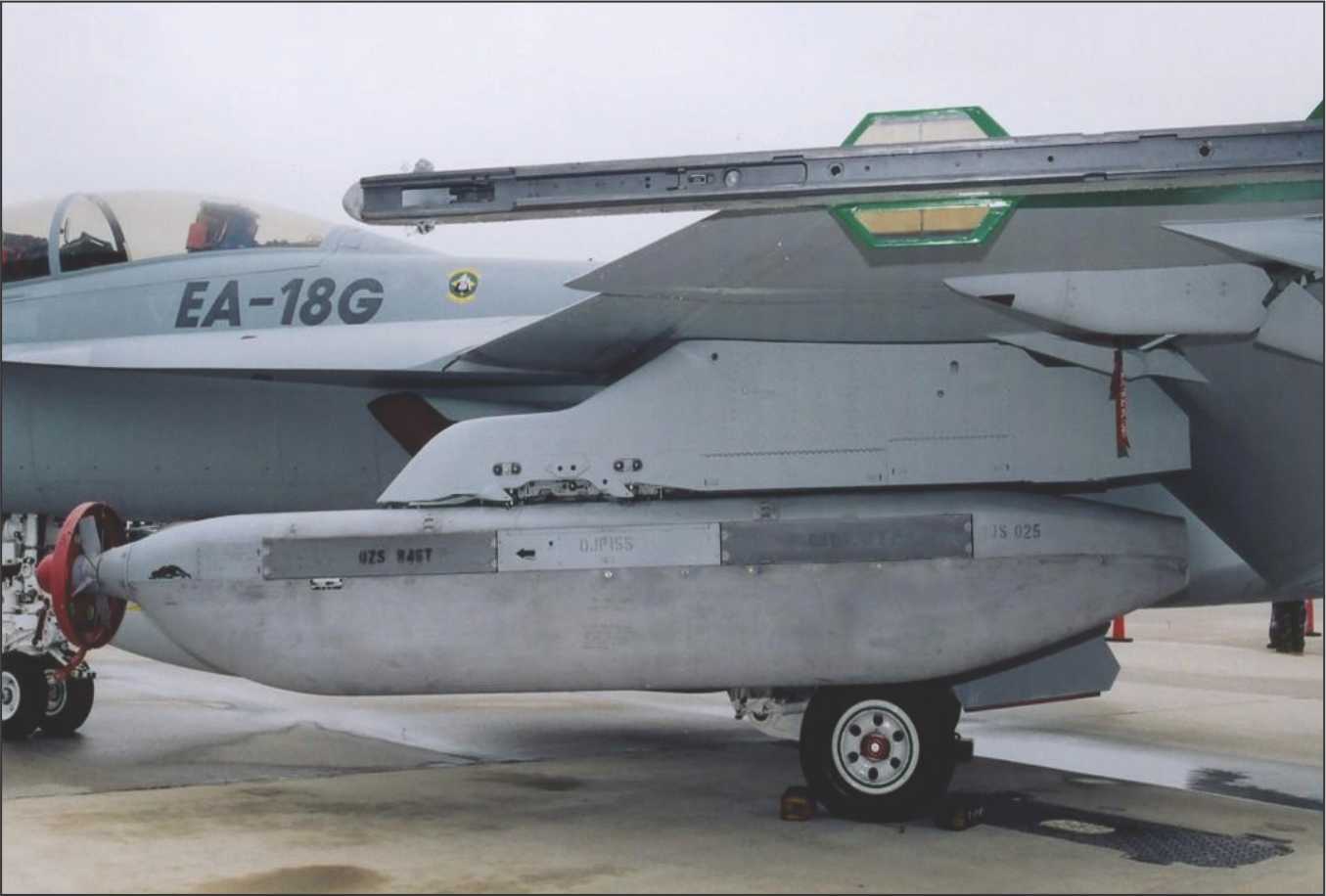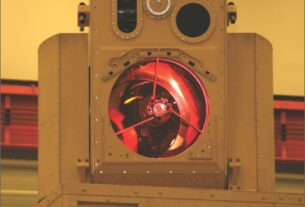Today’s airborne platforms on combat, refueling and transport missions cannot fly safely without adequate EW support systems for its survivability in the air. The electromagnetic spectrum has to be dominated to fly unhindered and complete the mission objectives.
As the modern fighters have achieved their ultimate in combat capabilities, the scientists are now focusing more and more on making the ears and eyes of these platforms extremely sensitive so that they are made aware of the impending threats well in advance and also airborne platforms must come to know that their presence has been located by the rival forces.
It all happens within fraction of seconds, hence the faster the decision making ability and faster the capabilities to respond to the threats, the better for the forces.
The rival forces if lagging behind in these resources will be knocked down of the skies. Thus Electronic Support Measures, Radar Warner Receivers and Jammers besides self protection systems like Missile Approach Warners and Countermeasure dispenser systems would be playing a very crucial role in the survivability of the airborne platforms.
An extremely secure and unimpeded use of the electromagnetic spectrum has become very essential, since the armed forces are more and more relying on the air assets to perform all aspects of multi spectrum operations.
Besides the expertise to engage in combat activities, the air crew will have to learn how to first establish their dominance in the electromagnetic spectrum and try to disrupt the enemy capabilities before they become threats.
Though the IAF has acquired dedicated EW platforms like the AWACS and the AEW&C to support the fighter aircrafts in combat environment, the need of the hour is to make all combat, refueler and transport aircraft self sustaining in order to counter the enemy offensive capabilities.
Role of AWACS
The IAF at present only possesses three functional AWACS and three more AEW&C are on the verge of operational deployment. These will only be able to cover a certain sector, leaving a huge gap in the several thousands kilometers long border with China and Pakistan besides over 7000 kms long coastline to take care of.
The Indian AWACS is based on the Israeli Phalcon system which is built around ELTA ELM-2075 AESA L-Band radar. It is also supported by the electronic and communications intelligence gathering capabilities. It is capable of receiving transmissions from ground stations and air platforms which provides a total surveillance picture. This uses a sensor fusion to provide total scene of the combat environment of several hundred square kilometers. There are onboard communications facilities which allow the AWACS to present a comprehensive picture.
These aircrafts are being designed to independently monitor, suppress, manipulate and exploit enemy transmissions and to achieve air superiority. However for the total dominance over the electromagnetic spectrum over the maritime area, Carrier based EW aircraft is considered an essential asset.
These will not only direct own aircrafts to launch an offensive mission but also alert own anti missile systems to counter the incoming threats. The US Navy has 19 squadrons of Prowlers out of which 11 are Carrier based besides four Expeditionary and four Marine Corps Squadrons.
Thus one Prowler can assist the entire Carrier battle fleet in its maritime area of operation and ensure that the Carrier remains immune from enemy attack.
In fact the EA-6B is totally dedicated tactical-jamming aircraft in the joint inventory of the US armed forces. The US Air Force had retired its last jammer aircraft the EF-111A Raven 15 years ago. Hence, the Prowlers will continue to accompany on any overseas air campaign for suppressing the enemy air defences.
The Prowlers can also launch AGM-88 high speed anti-radiation missiles (HARM) and it can also execute standoff, stand in and escort jamming for suppressing enemy air defences.
The Boeing is at present working for the US Navy for developing the FA-XX strike fighter called the EA-18G Growler , which is an unmanned combat aircraft (called the X-47 B test platforms). This will have an arsenal of specialized air launched standoff weapons which is part of new focus on exploiting the electromagnetic spectrum.
Raytheon’s Next Generation Jammer will integrate the most advanced electronic attack technology into the EA-18G to ensure superior mission performance. Raytheon claims that this dependable and affordable system will deny, degrade and disrupt threats while protecting U.S. and coalition forces.
Since the Indian Navy would very soon be inducting the Russian Aircraft Carrier Gorshkov (INS Vikramaditya) and would be delivered indigenous Carrier Vikrant in five years time, the Navy must also have independent EW aircraft like the Prowler to protect itself from all threats.
Indigenous development
In accordance with international trend, Indian DRDO is trying to provide EW systems to Indian armed forces with a range of 400-500 kms radius. According to senior official Indian armed forces presently only have EW systems on airborne platforms with a limited range of line of sight radius.
The Indian armed forces have identified the requirement of advanced EW systems and the Indian defence electronics firm Bharat Electronics has worked with DARE (Defence Avionics Research Establishment) to produce a number of systems. DARE has achieved some good progress in the areas of Airborne Electronic Warfare, Airborne processors and Testing and Evaluation of Electronic Warfare Systems.
The DARE is working on implanting the EW systems on drones, aircrafts and satellites and trying to increase the range for surveillance in enemy territories.
Besides the DARE the DRDO lab LRDE (Electronics and Radar Development Establishment) has also developed synthetic aperture radar which has been tested on a Dornier aircraft. According to officials in BEL the Indian armed forces have indicated to BEL that they would be acquiring EW systems worth US$ 5 billion over next decade.
EW systems upgrade is being done on the MiG-29 and Sukhoi-30 and new EW Suites for the Light Combat Aircraft Tejas and Light Attack Helicopter has been developed.
DARE has successfully equipped fighter aircraft of Indian Air Force and Indian Navy with electronic armor, consisting of Electronic Support Measures and Self-Protection Jammers.
A state-of-the-art Radar Warner RWR was developed for fighter aircraft, by DARE in 1997, which is being produced at BEL and is being installed in all aircraft of IAF, including helicopters and transport aircraft, in addition to Indian Navy.
DARE has also developed a Range on Wheels (ROW) facility for evaluating installed specifications of airborne EW systems and for fine tuning ECM techniques. This mobile range consists of a representative Threat Radar, a Reference Radar, a Slaved Rx/Tx Pedestal System, a Data Acquisition Station, a Mission Control Station and Generator Vehicle.
Since EW systems are now being used as a force multiplier, the Indian armed forces have conveyed its requirement to the MoD. Though Indian Public Sector undertakings are working on the advanced EW systems, the global firms are also flocking to push their EW systems to Indian armed forces. Among them the Swedish SAAB and the American Raytheon and the Northrop Grumman are the leading contenders.
Advanced offer
The SAAB has offered its Electronic Support Measures HES-21 System with ELINT capabilities which can provide passive monitoring of the Radio Frequency Environment and the ability to intercept, characterize, identify and geo-locate emitters.
The HES-21 system allows for an onboard ESM operator with access to the ESM HMI for both high-level overview and real time analysis functions.
The SAAB has also offered the Radar Warning Receivers with ESM functions which is designed especially for deploying on fighter aircrafts. It gives pilot access to superior threat detection and evaluation throughout the mission and features 100 percent probability of intercept in an extremely dense signal environment with high sensitivity as well as possibility to geo-locate RF emitters to enhance the situational awareness of the pilot.
SAAB has also integrated the EW systems like the RWR, MAW, Jammers and Dispensers, within the aircraft and in the aircraft avionic system. This enables the pilots to have enhanced situational awareness, reduced pilot workload and ease of operation through the use of common EW support tools.
An integrated EW system also enables the pylon stations to be dedicated to weapon carriage. The Integrated Defensive Aids Suite (IDAS) developed by SAAB for the airborne platforms can radically improve their defensive and operational capabilities.
The IDAS family of systems provides self-defence for helicopters and fixed wing aircraft. The system is capable of detecting multi-spectral threats with Laser Warning System (LWS) and pyrotechnical dispensers integrated into a light-weight self-protection system. It can be installed either in pods or integrated with the aircraft structure or system.
SAAB has developed the Counter Measure Dispenser Systems to provide protection if the aircraft is detected by the enemy. For this SAAB has delivered counter measure Dispenser Systems which are installed on most of the world’s aircraft.
Raytheon has offered to Indian Air Force the cutting-edge digital radar warning receiver technology which delivers accurate, timely detection of unseen threats. The ALR-69 A (V) digital radar warning receiver was selected by Boeing to provide the KC-46 Tanker with greater situational awareness resulting in significantly increased aircrew survivability. The ALR-69(v) 3 is currently in production for the US Navy F/A-18E/F. These systems deliver improved detection range, unambiguous threat identification and compatibility with other onboard systems.
Raytheon has developed an Electronic Warfare Battle Management (EWBM) solution which provides an enhanced Command and Control capability. This enables electronic warfare officers to plan and execute their missions in a fully interoperable and collaborative environment. Raytheon in fact has a long history in EW on a variety of platforms and have delivered successful products such as Compass Call, EA-18G, CEASAR, ALQ-128, and Trailblazer.
Raytheon has also completed testing on an upgrade, called the High Speed Anti Radiation Missile (HARM) Control Section Modification (HCSM). HCSM adds a GPS receiver and an improved inertial measurement unit for precision navigation. HCSM also features a digital flight computer that merges targeting solutions from navigation and seeker systems. The enhancements improve the probability of hit, while controlling where the missile can and cannot fly.
MALD-J developed by Raytheon is the jammer variant of the basic decoy, and the first ever stand-in jammer to enter production. The unmanned MALD-J navigates and operates much closer than conventional EW to the victim radar when jamming the electronics, allowing aviators and aircraft to stay out of harm’s way. And, it is able to loiter in the target area for an extended time period, which provides sufficient time to complete the mission objectives.





